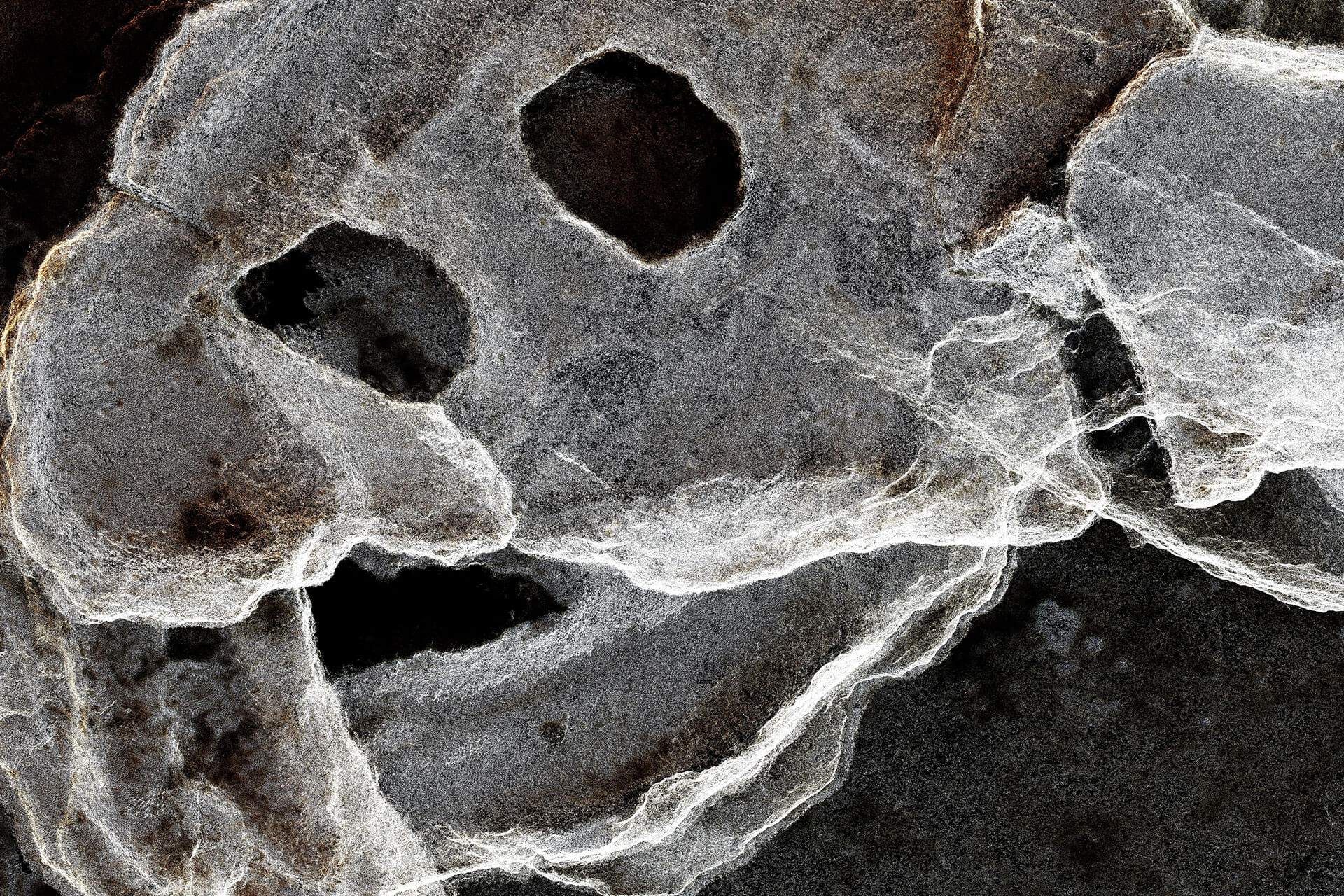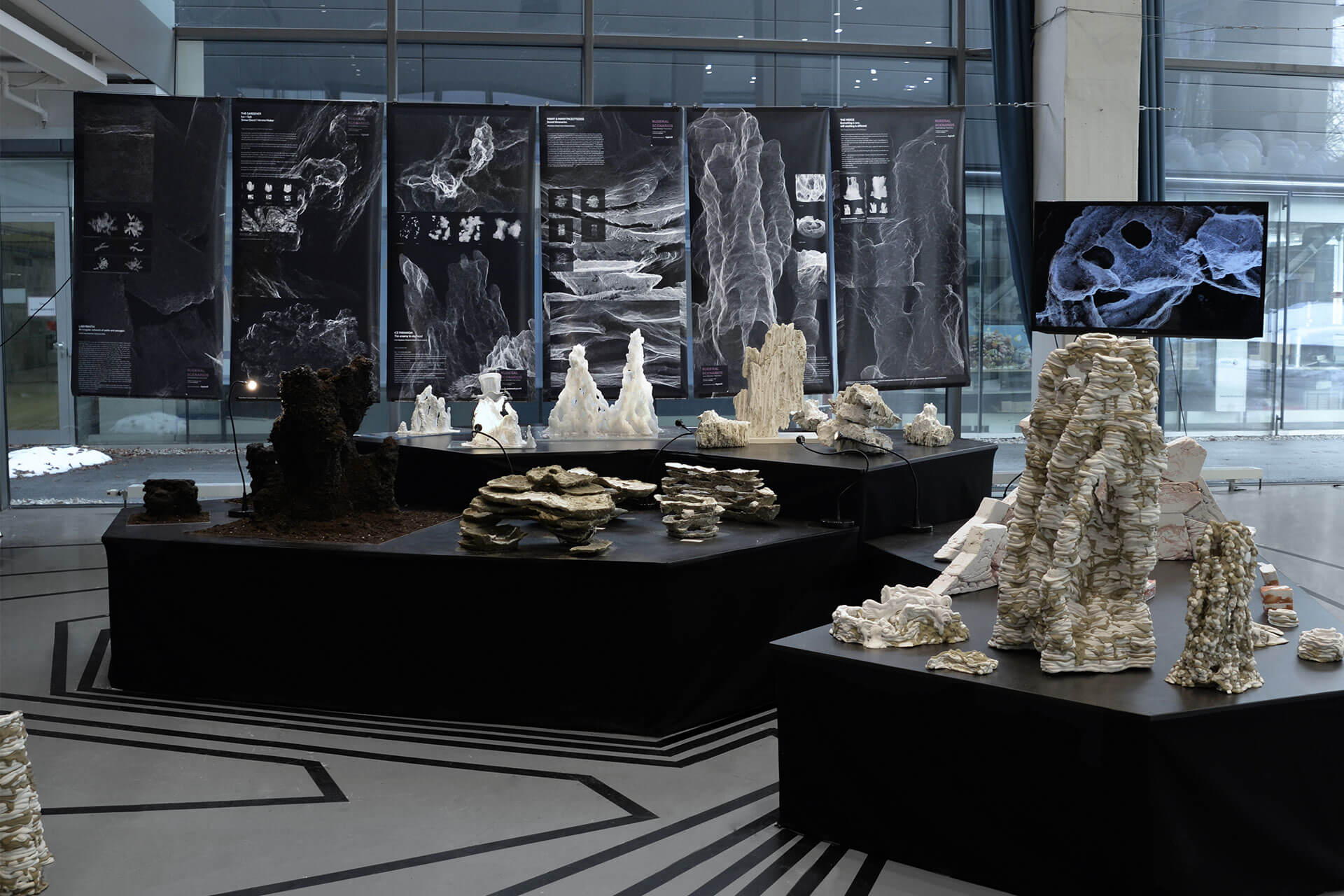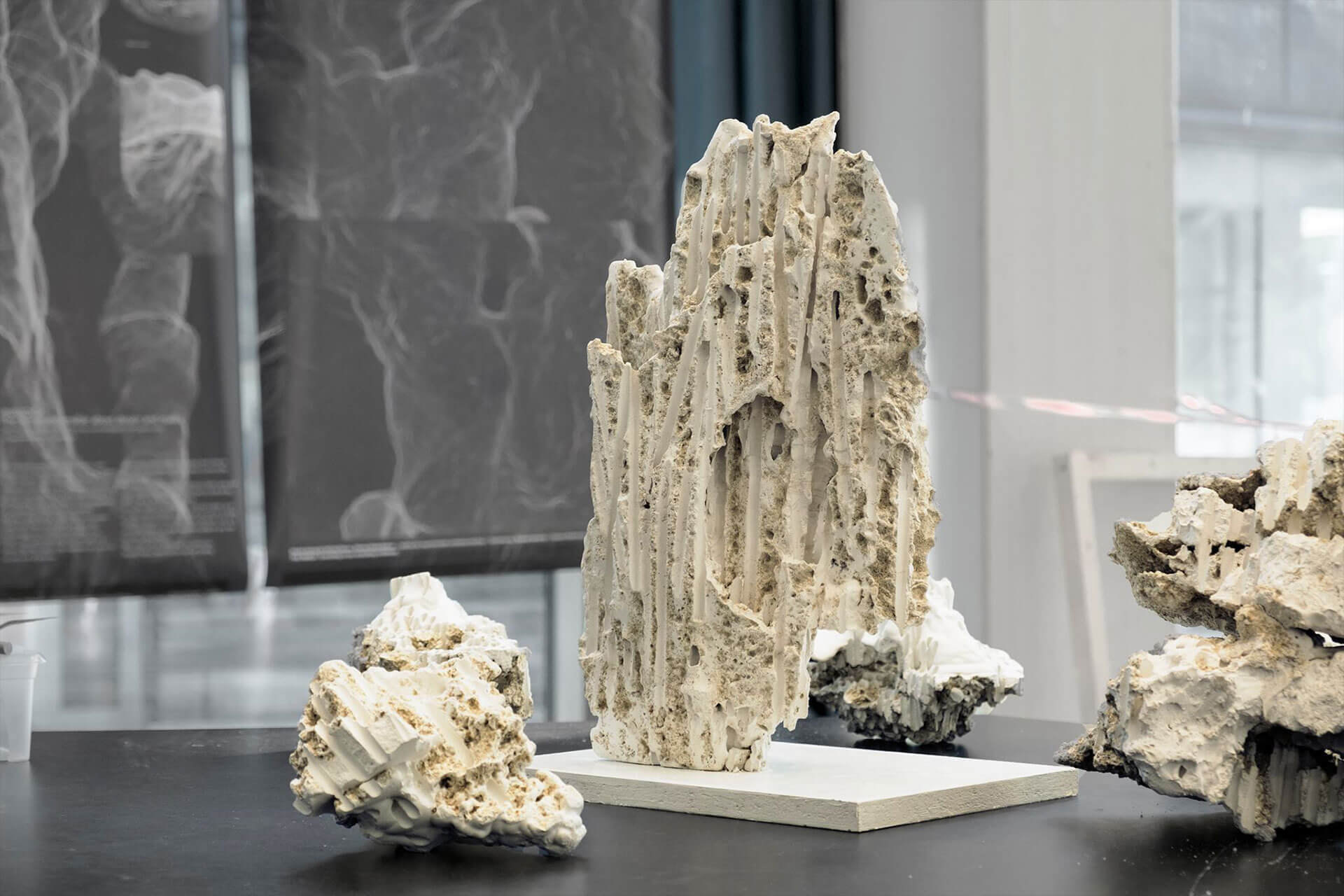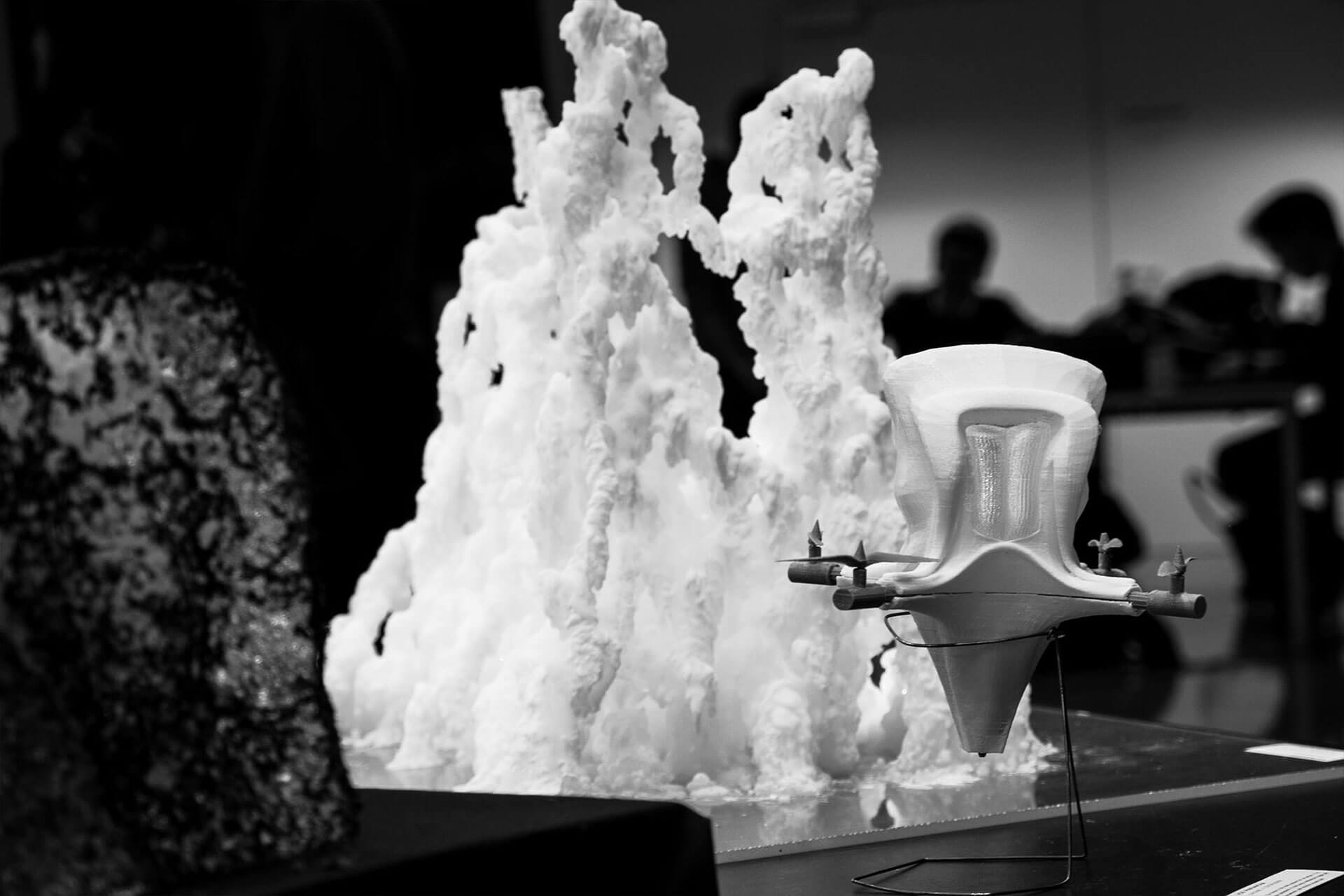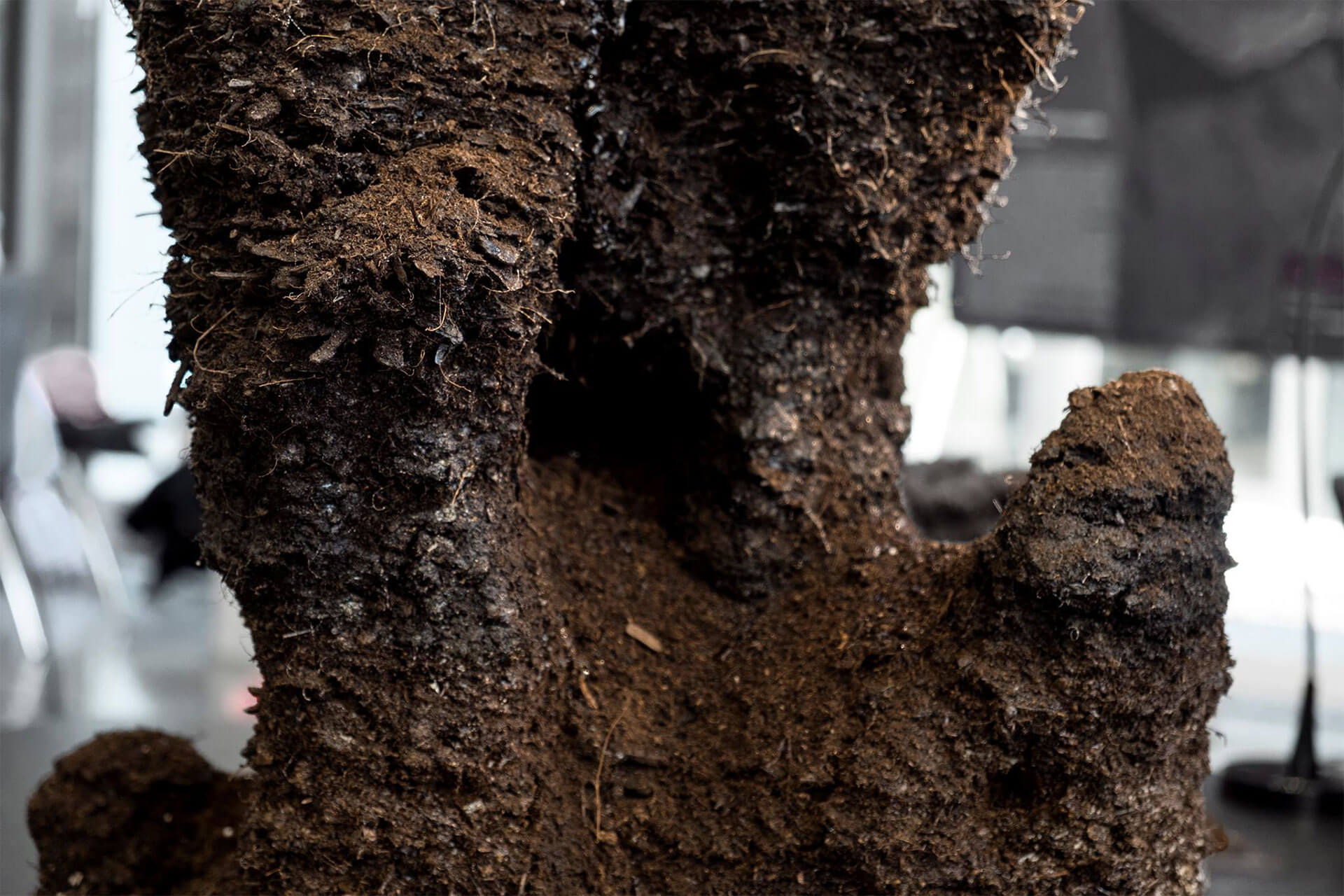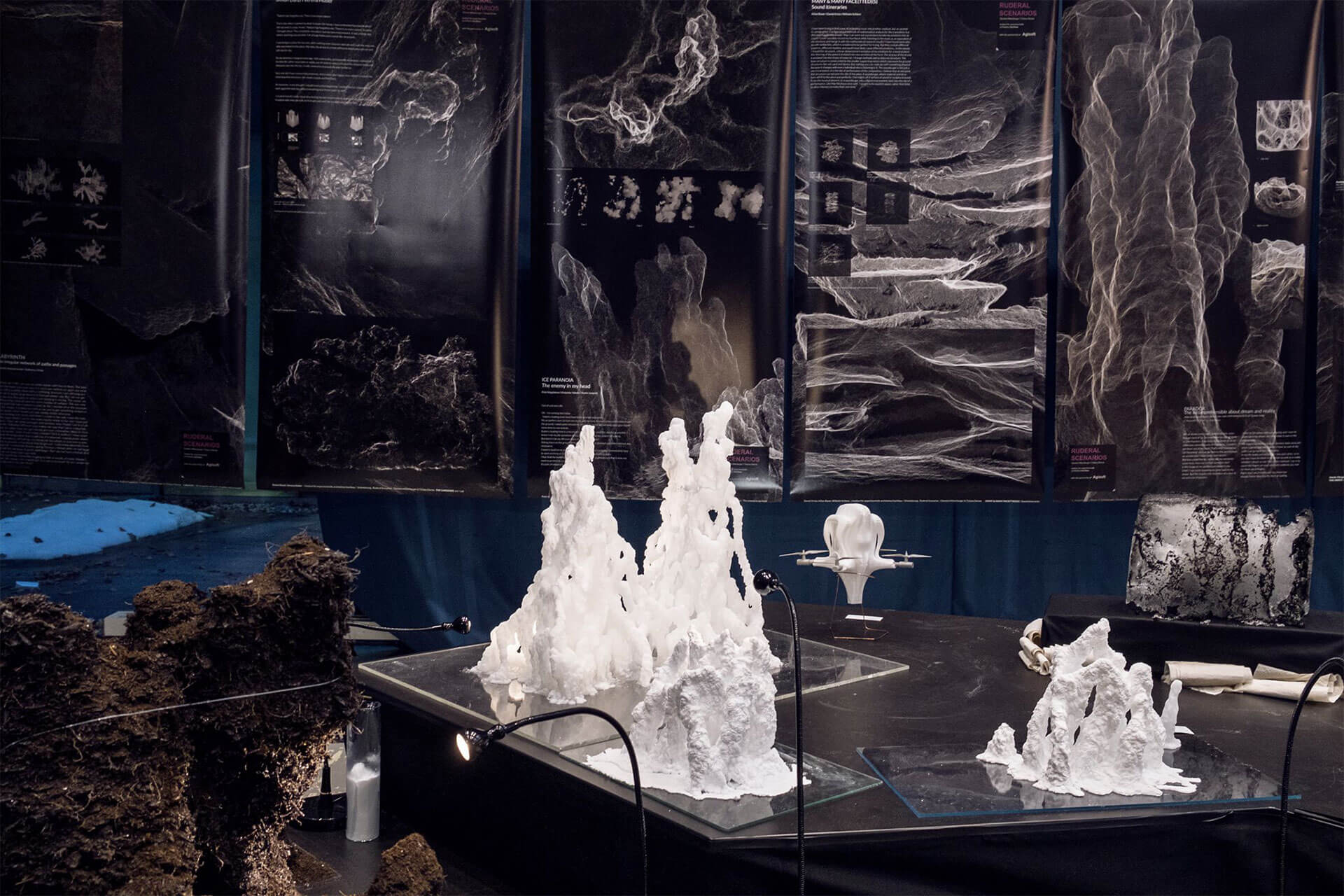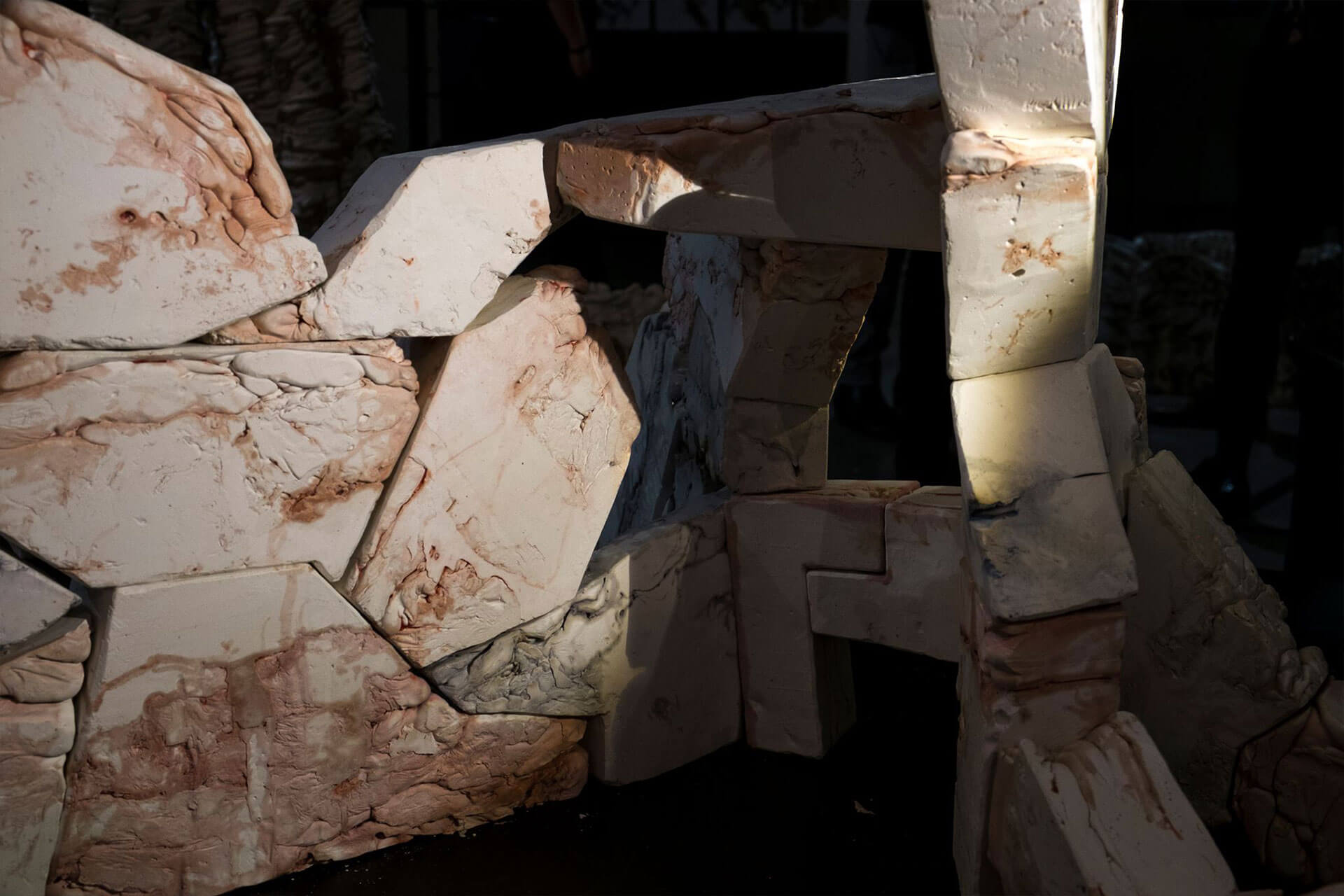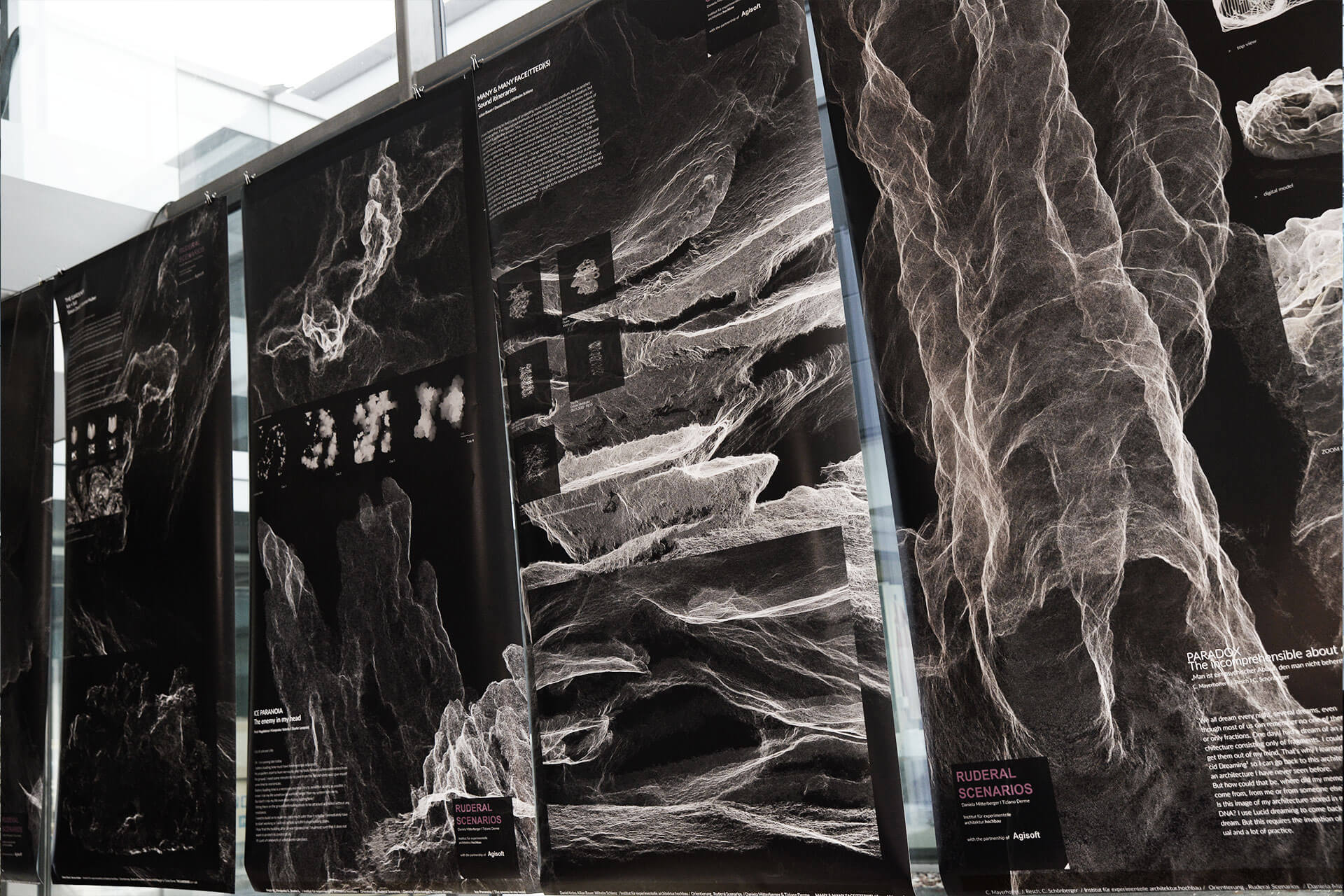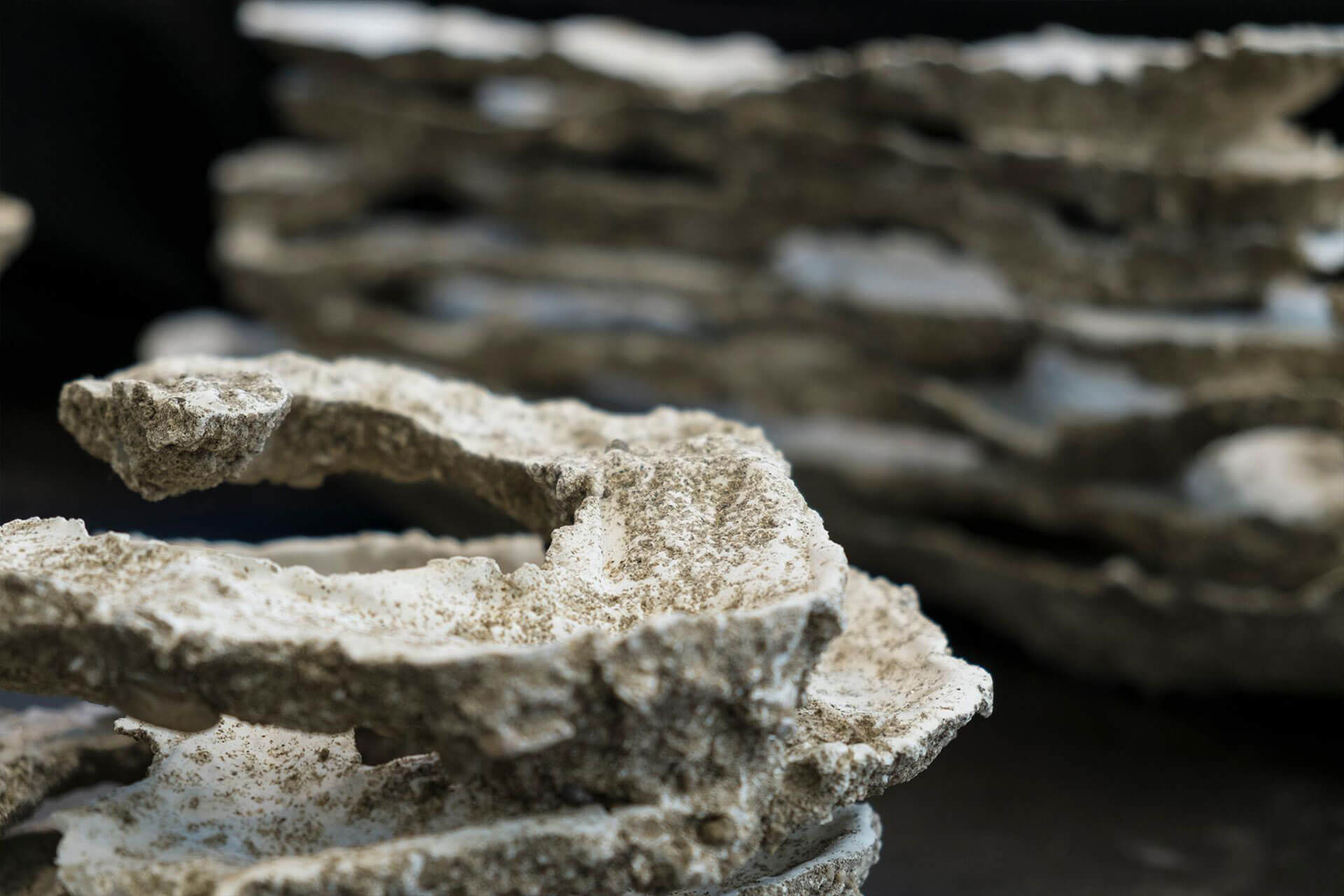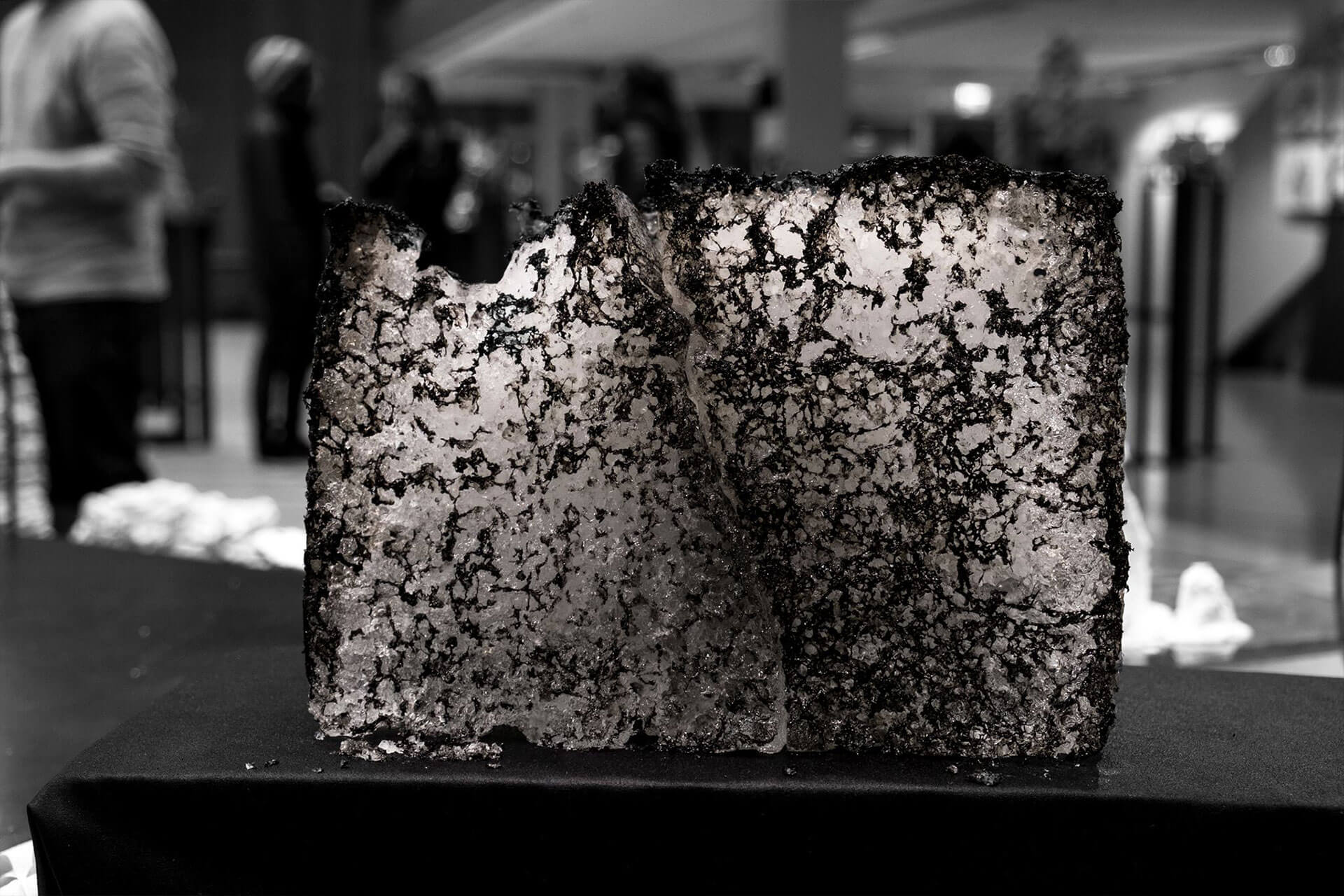Pluri.media
RUDERAL SCENARIOS / architecture as process of formation
Orientierung 848100
Daniela Mitterberger, Tiziano Derme
Topic
The course “Ruderal Scenarios” is the initial exposure and introduction to architecture focusing
on specific topics such as form, scale, experience, technology, media and communication.
The course positions itself in opposition to Innsbruck’s physical context- the alpine environment.
Specific focus will be given to processes of sedimentation, erosion and geological
formations where ma er emerges from a system of forces. Through a series of excursions
students will look at found environmental geological formations, stones, and wastelands.
The result of this observation will be translated into digital representations and large scale
models, producing novel design strategies and unconventional fabrication protocols. Finally
the studio will use these complex forces and information to speculate on large scale models
and virtual natural environments created around material studies, form, gravity, structure and
tactility.
Outcome
Students will develop different material and formal systems leading to the creation of a
spatial niche / niːʃ,nɪtʃ/. The word niche is a word borrowed from the French “niche” and la n
“nidus“ which means “make a nest”. In architectural terms it can mean spatial expressions
such as cavities, hollows, recess, within the thickness of a wall, for a character, a species or
a statue. In ecology the word describes a function within an ecological system to which an
organism is especially suited.
The outcome will be large scale models resembling an architectural spatial expression considering
a character inhabiting the space. Students will deal with topics such as spatial experiences,
materials, environment and scale as well as with topics such as materials, ergonomics,
structural systems and gravity.
The concept of “Ruderal Scenarios” is used for habitations that emerge in places that have been neglected by people, in harsh
environments like on rubble, ruins and barren lands, all places that were originally not designated as a mankind intervention
in nature. These environments are implemented and brought from outside, but their adaptability to different locations makes
them become a phenomenon in evolutionary terms. These “wild” architectures are placed in a stone-like landscape that
cannot be localized, including traces of civilization trash. The course examines the archaeology of everyday, traces of historical
layers and inter-causalities of nature and civilization.
